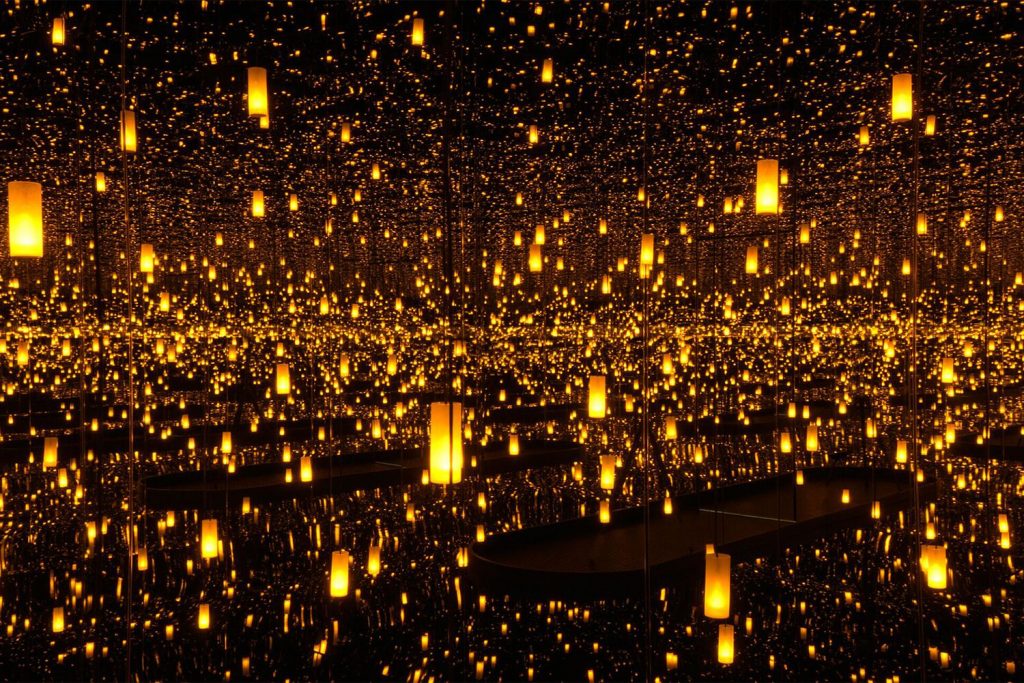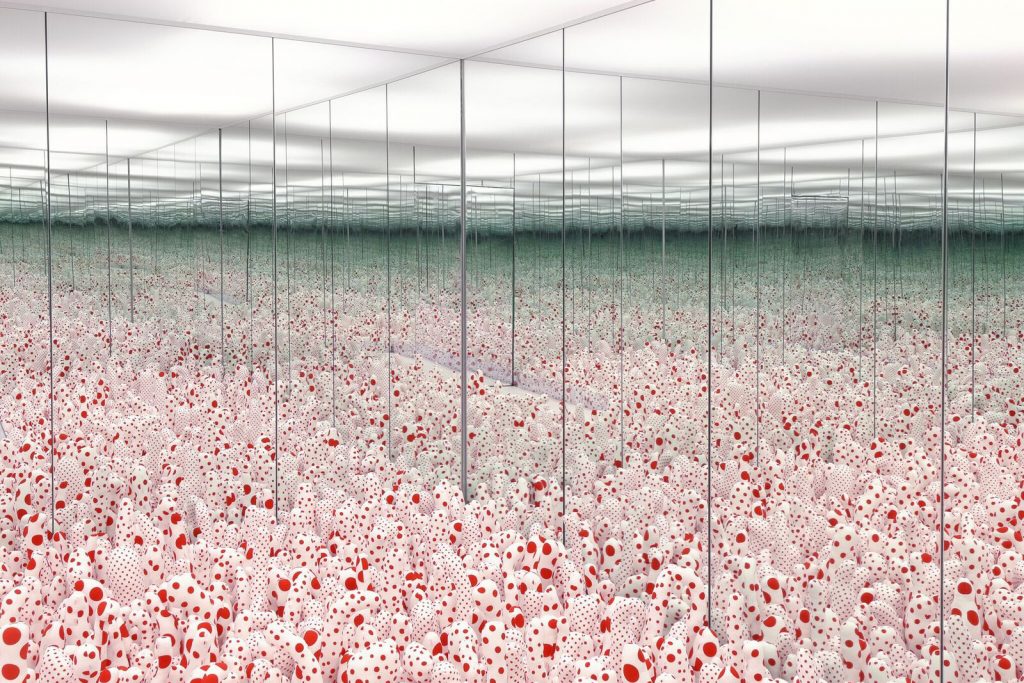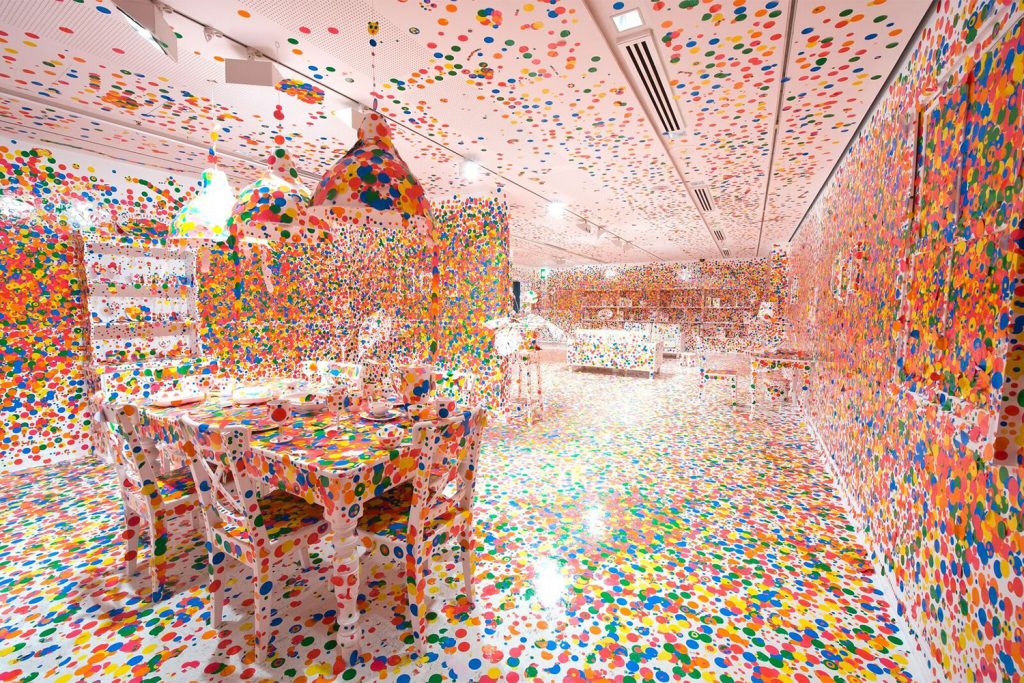For the past two months, a huge source of hype within the art world has been Yayoi Kusama’s exhibition of her Mirror Rooms at the High Museum in Atlanta. This is one of the last times these rooms will be exhibited within the United States and has drawn record crowds to the High.
I traveled down to Atlanta two weeks ago to see the exhibit, having bought tickets in November. This exhibit is something I’ve been waiting three long years to see, ever since I discovered Kusama’s work and developed an almost unhealthy obsession with it and her style and personality.
Yayoi Kusama seems to have a fascination for time and her interpretation of it. Whether it’s the time spent in each room of her exhibitions, the “100 Days of Tickets” set by The High, or the time slots each guest is required to attend by, every aspect of The High’s current exhibit, “Yayoi Kusama: Infinity Rooms”, has been carefully divided.
I tried to prevent myself from forming any expectations about my experience. I knew from research that each exhibit had a time limit. There were six of Yayoi’s rooms in total, with several of her other stand-alone artworks scattered throughout the exhibit. The pieces displayed included “Phalli’s Fields”, “All the Eternal Love I Have for the Pumpkins”, “The Obliteration Room”, “Dots Obsession – Love Transformed into Dots”, and, of course, the Infinity Rooms. The two most widely known are “The Souls of Millions of Light Years Away” and “Aftermath of Obliteration of Eternity.” Each of these rooms has a certain amount of time the viewer can spend within them. Ranging from 20 to 45 seconds, it seems odd that something so popular among the art community, and the world, has been so restricted.
Although this allotment of time was something originally set by Kusama herself, one can’t help but wonder why she is so set on monitoring the time spent in her pieces? Most artists prefer for their guests to spend prolonged time among their art, to take it in, learn from it. Each of Yayoi’s exhibits has long lines and wait times, no matter the time spent in each room or viewing area. This is practically an oxymoron. If time is infinite, as Yayoi says, why limit it?
There are two answers. One, the more practical answer, is that if viewing time was left entirely up to the attendee, very few guests would be able to view the works. Kusama’s art is so captivating, so enthralling, that if an attendant hadn’t demanded I leave, I probably wouldn’t. The second answer is that one could easily get lost in her piece. Creating this time limit of 30 seconds, 25 seconds, 45 seconds, grounds the viewer. It keeps the viewer conscious of their surroundings and the time that’s passing around them.
Many people have asked me about my experience, considering I’ve overshared pictures of it on every form of social media I have. The most common is, “Was it worth it?” Was it worth that almost 8-hour drive to Atlanta and back to only spend a maximum of 30 seconds inside of Kusama’s artworks?
I say yes, absolutely yes. To take a glimpse at someone else’s perception of infinity, to be able to see what it’s like inside this marvelous woman’s head, to live in another’s reality for even 30 seconds was worth every minute of my trip. After all, isn’t that what all art is? It’s one of the only ways an outsider can spend time within another’s head. Yayoi Kusama has not only given others a way to see her reality but to immerse themselves inside of it. And that’s worth all the time in the world.
Written by Kat Phillips




